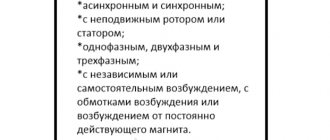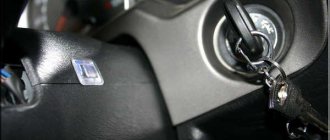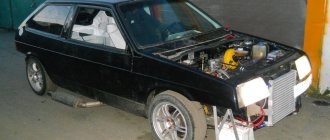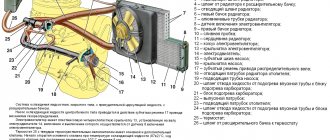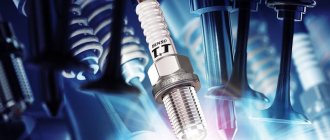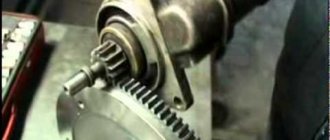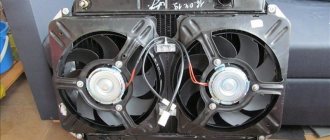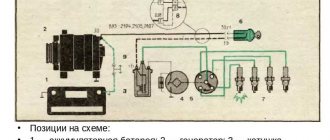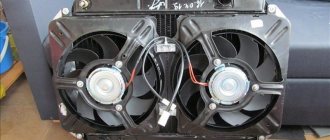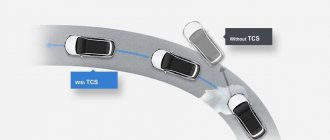The structure and principle of operation of a rotary engine
The operating pattern of a rotary engine is something completely different from a conventional internal combustion engine. First, we must leave behind the design of the internal combustion engine as we know it. And secondly, try to absorb new knowledge and concepts.
Like a piston engine, a rotary engine uses pressure that is created by burning a mixture of air and fuel. In piston engines, this pressure is created in the cylinders and moves the pistons back and forth. The connecting rods and crankshaft convert the reciprocating motion of the piston into rotational motion, which can be used to turn the wheels of a car.
The RPD is named so because of the rotor, that is, the part of the motor that moves. Thanks to this movement, power is transferred to the clutch and gearbox. Essentially, the rotor pushes out energy from the fuel, which is then transferred to the wheels through the transmission. The rotor itself is made of alloy steel and has, as mentioned above, a triangle shape.
The capsule where the rotor is located is a kind of matrix, the center of the universe, where all processes take place. In other words, it is in this oval body that what happens:
- mixture compression;
- fuel injection;
- oxygen supply;
- ignition of the mixture;
- release of burnt elements to the outlet.
In a word, six in one, if you like.
The rotor itself is mounted on a special mechanism and does not rotate around one axis, but seems to run. Thus, cavities isolated from each other are created inside the oval body, in each of which one of the processes occurs. Since the rotor is triangular, there are only three cavities.
It all starts as follows: in the first cavity formed, suction occurs, that is, the chamber is filled with an air-fuel mixture, which is mixed here. After this, the rotor rotates and pushes this mixed mixture into another chamber. Here the mixture is compressed and ignited with the help of two candles.
The mixture then goes into the third cavity, where parts of the used fuel are displaced into the exhaust system.
This is the full cycle of RPD operation. But it's not that simple. We examined the RPD scheme only from one side. And these actions take place constantly. To put it differently, processes occur on three sides of the rotor at once. As a result, in just one revolution of the unit, three cycles are repeated.
How to polish your car headlights yourself?
In addition, Japanese engineers managed to improve the rotary engine. Today, Mazda rotary engines have not one, but two or even three rotors, which significantly increases performance, especially when compared with a conventional internal combustion engine. For comparison: a two-rotor RPD is comparable to a six-cylinder internal combustion engine, and a 3-rotor one is comparable to a twelve-cylinder one. So it turns out that the Japanese turned out to be so far-sighted and immediately recognized the advantages of the rotary engine.
Again, performance is not the only benefit of RPD. He has a lot of them. As mentioned above, the rotary engine is very compact and uses as many as a thousand fewer parts than the same internal combustion engine. There are only two main parts in the RPD - the rotor and the stator, and you can’t imagine anything simpler than that.
RPD in the West
In the West, the rotary engine did not produce a boom, and its development in the USA and Europe was put an end to the fuel crisis of 1973, when gasoline prices soared and car buyers began to ask the price of models with economical fuel consumption.
Considering that the rotary engine consumed up to 20 liters of gasoline per hundred kilometers, its sales during the crisis fell to the limit.
The only country in the East that did not lose faith was Japan. But even there, manufacturers quickly lost interest in the engine, which did not want to improve. And in the end, there was one persistent tin soldier left - the Mazda company. In the USSR, the fuel crisis was not felt. The production of vehicles with RPD continued after the collapse of the Union. VAZ stopped working on RPD only in 2004. Mazda came to terms only in 2012.
Operating principle of a rotary engine
The operating principle of a rotary piston engine once made many talented engineers raise their eyebrows in surprise. And today, the talented engineers of Mazda deserve all praise and approval. It's no joke, believe in the performance of a seemingly buried engine and give it a second life, and what a second life!
Sectional view of a rotary engine
Rotary motor rotor
Rotary engine chamber
The rotor has three convex sides, each of which acts as a piston. Each side of the rotor has a recess in it, which increases the speed of rotation of the rotor as a whole, providing more space for the air-fuel mixture. At the top of each face there is a metal plate, which forms the chambers in which the engine strokes occur. Two metal rings on each side of the rotor form the walls of these chambers. In the middle of the rotor there is a circle in which there are many teeth. They are connected to a drive, which is attached to the output shaft. This connection determines the path and direction that the rotor moves inside the chamber.
The engine chamber is approximately oval in shape (but to be more precise it is an Epitrochoid, which in turn is an elongated or shortened epicycloid, which is a flat curve formed by a fixed point on a circle rolling on another circle). The shape of the chamber is designed so that the three apexes of the rotor are always in contact with the chamber wall, forming three closed gas volumes. In each part of the chamber, one of four cycles occurs:
- Inlet
- Compression
- Combustion
- Release
The inlet and outlet openings are located in the walls of the chamber and there are no valves on them. The exhaust port is connected directly to the exhaust pipe, and the intake port is directly connected to the gas.
Rotary motor output shaft
The output shaft has semicircular cam protrusions placed asymmetrically relative to the center, which means that they are offset from the centerline of the shaft. Each rotor fits onto one of these lugs. The output shaft is analogous to the crankshaft in piston engines. Each rotor moves inside the chamber and pushes its own cam.
Since the cams are installed asymmetrically, the force with which the rotor presses on it creates a torque on the output shaft, causing it to rotate.
Structure of a rotary engine
A rotary engine consists of layers. The twin-rotor engine consists of five main layers, which are held together by long bolts arranged in a circle. Coolant flows through all parts of the structure.
How to polish a car yourself?
The two outer layers are closed and contain bearings for the output shaft. They are also sealed in the main sections of the chamber where the rotors are contained. The inner surface of these parts is very smooth and helps the rotors work. The fuel supply section is located at the end of each of these parts.
The next layer contains the rotor itself and the exhaust part.
The center consists of two fuel supply chambers, one for each rotor. It also separates the two rotors so its outer surface is very smooth.
At the center of each rotor are two large gears that rotate around smaller gears and are attached to the motor housing. This is the orbit for rotating the rotor.
Of course, if the rotary engine had no disadvantages, then it would definitely be used in modern cars. It is even possible that if the rotary engine had been sinless, we would not have known about the piston engine, because the rotary engine was created earlier. Then the human genius, trying to improve the unit, created a modern piston version of the engine.
But unfortunately, the rotary engine has disadvantages. Such obvious mistakes of this unit include the sealing of the combustion chamber. In particular, this is due to insufficiently good contact of the rotor itself with the cylinder walls. When friction with the cylinder walls, the metal of the rotor heats up and, as a result, expands. And the oval cylinder itself also heats up, and even worse - the heating occurs unevenly.
If the temperature in the combustion chamber is higher than in the intake/exhaust system, the cylinder must be made of high-tech material installed in different places in the body.
In order for such an engine to start, only two spark plugs are used. No longer recommended due to the nature of the combustion chamber. The RPD is equipped with a completely different combustion chamber and produces power three-quarters of the working time of the internal combustion engine, and the efficiency is as much as forty percent. In comparison: for a piston engine the same figure is 20%.
Creator – Felix Wankel
Rotary engine
There is an old story that Wankel invented the miracle engine in 1919. It was always hard to believe in her: how could a 17-year-old boy, albeit talented, do such a thing? To do this, you need to undergo training somewhere at a university, learn how to design and draw... Much more likely is information about the first sketches of the engine from 1924, which Wankel made after graduating from high school and going to work at a technical literature publishing house. While shoveling mountains of waste paper, you can either lose interest in technology forever, or start designing it yourself. Apparently, Felix’s soul was in design.
He opened his own workshop in the city of Heidelberg, and in 1927 the drawings of a “machine with rotating pistons” (abbreviated DKM in German) were born. Felix Wankel received his first patent, DRP 507584, in 1929, and in 1934 he applied for the DKM engine. True, he received a patent two years later. Then, in 1936, Wankel settled in Lindau, where he located his laboratory.
Felix Wankel
Then the authorities noticed the promising designer, and work on DKM had to be abandoned. Wankel worked for BMW, Daimler and DVL, the main aircraft engine manufacturers of Nazi Germany. So it is not surprising that before 1946 Wankel had to sit in prison as an accomplice of the regime. The French took the laboratory to Lindau, and Felix was simply left with nothing.
Only in 1951 did Wankel get a job at a motorcycle company - the then widely known NSU. While restoring the laboratory, he interested Walter Freude, a designer of racing motorcycles, with his designs. Together, Wankel and Freude pushed the project through management, and engine development accelerated dramatically. On February 1, 1957, the first rotary engine DKM-54 started operating. It ran on methanol, but by June the engine, which had worked 100 hours on the stand, was switched to gasoline.
Advantages of a rotary engine
Fewer moving parts
A rotary engine has many fewer parts than say a 4 cylinder piston engine. A twin rotor engine has three main moving parts: two rotors and an output shaft. Even the simplest 4-cylinder piston engine has at least 40 moving parts, including pistons, connecting rods, rods, valves, rockers, valve springs, timing belts, and the crankshaft. Minimizing moving parts allows rotary engines to achieve higher reliability. This is why some aircraft manufacturers (for example Skycar) use rotary engines instead of piston engines.
Softness
All parts in a rotary engine rotate continuously in one direction, unlike the constantly changing direction of the pistons in a conventional engine. The rotary engine uses balanced rotating counterweights to suppress any vibrations. The power delivery in a rotary engine is also smoother. Each combustion cycle occurs in one rotor revolution of 90 degrees, the output shaft rotates three times for each rotation of the rotor, each combustion cycle occurs in 270 degrees during which the output shaft rotates. This means that a single rotary engine produces three-quarters of the power. Compared to a single cylinder piston engine, combustion occurs every 180 degrees of every revolution, or only a quarter revolution of the crankshaft.
Slowness
Because the rotors rotate at one-third of the rotation of the output shaft, the main parts of the engine rotate more slowly than those in a conventional piston engine. This also helps with reliability.
Small dimensions + high power
The compactness of the system, together with high efficiency (compared to a conventional internal combustion engine), allows the miniature 1.3-liter engine to produce about 200-250 hp. True, along with the main design flaw in the form of high fuel consumption.
Disadvantages of rotary motors
The most important problems in the production of rotary engines:
- It is quite difficult (but not impossible) to comply with regulations on CO2 emissions into the environment, especially in the USA.
- Production can be much more expensive, in most cases due to low volume production, compared to piston engines.
- They consume more fuel because the thermodynamic efficiency of a piston engine is reduced in a long combustion chamber and also due to the low compression ratio.
- Rotary engines due to their design have a limited service life - on average it is about 60-80 thousand km
This situation simply forces rotary engines to be classified as sports car models. And not only. Today there are supporters of the rotary engine. This is the famous automaker Mazda, which took the path of the samurai and continued the research of Master Wankel. If we remember the same situation with Subaru, then the success of Japanese manufacturers becomes clear, clinging, it would seem, to everything old and discarded by Westerners as unnecessary. But in fact, the Japanese manage to create new things out of old ones. The same thing happened then with boxer engines, which are today Subaru’s “feature.” At the same time, the use of such engines was considered almost a crime.
The work of the rotary engine also interested Japanese engineers, who this time set about improving the Mazda. They created the 13b-REW rotary engine and equipped it with a twin-turbo system. Now Mazda could easily compete with German models, since it offered as many as 350 horses, but again suffered from high fuel consumption.
Do-it-yourself anti-corrosion treatment of the body
I had to take extreme measures. The next Mazda RX-8 model with a rotary engine is already coming out with 200 horses, which helps reduce fuel consumption. But this is not the main thing. Something else deserves respect. It turned out that before this, no one except the Japanese had thought of using the incredible compactness of the rotary engine. After all, the power is 200 hp. The Mazda RX-8 was launched with a 1.3-liter engine. In a word, the new Mazda is reaching another level, where it is able to compete with Western models, taking into account not only engine power, but also other parameters, including low fuel consumption.
Surprisingly, they tried to introduce RPD in our country. Such an engine was designed for installation on the VAZ 21079, intended as a vehicle for special services, but the project, unfortunately, did not take root. As always, there was not enough state budget money, which is miraculously siphoned out of the treasury.
But the Japanese managed to do it. And they don’t want to stop there. According to the latest data, the Mazda manufacturer will improve the engine and a new Mazda will soon be released, with a completely different unit.
RPD in the USSR
But the Soviet Union did not buy a license at all. The development of our own rotary engine began with the fact that the German Ro-80 car, the production of which NSU began in 1967, was brought to the Union and dismantled.
Seven years after this, a design bureau appeared at the VAZ plant, developing exclusively rotary piston engines. Through his work, the VAZ-311 engine appeared in 1976. But the first pancake turned out to be lumpy, and it was refined for another six years.
The first Soviet production car with a rotary engine was the VAZ-21018, introduced in 1982. Unfortunately, already in the pilot batch, the motors of all the cars failed. They worked on it for another year, after which the VAZ-411 and VAZ 413 appeared, which were adopted by the security forces of the USSR. There they weren’t particularly worried about fuel consumption and the short service life of the engine, but they needed fast, powerful, but inconspicuous cars that could keep up with a foreign car.
VAZ with a rotary engine (GAI)
